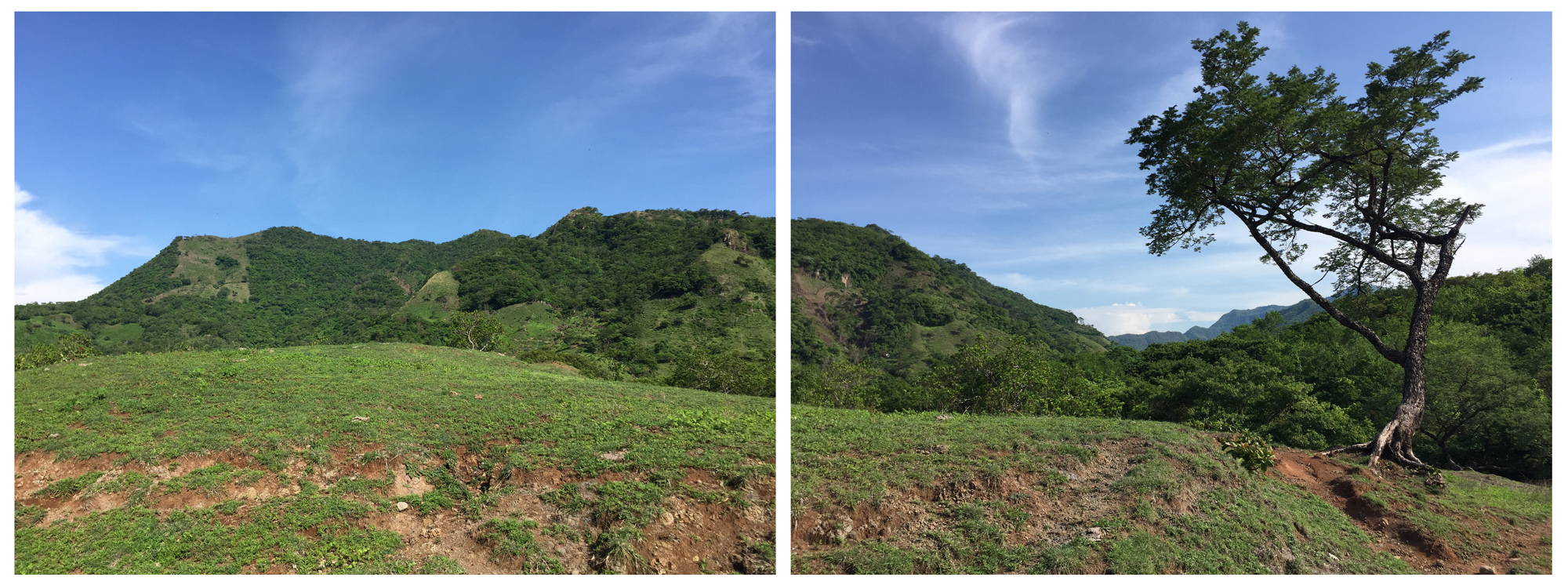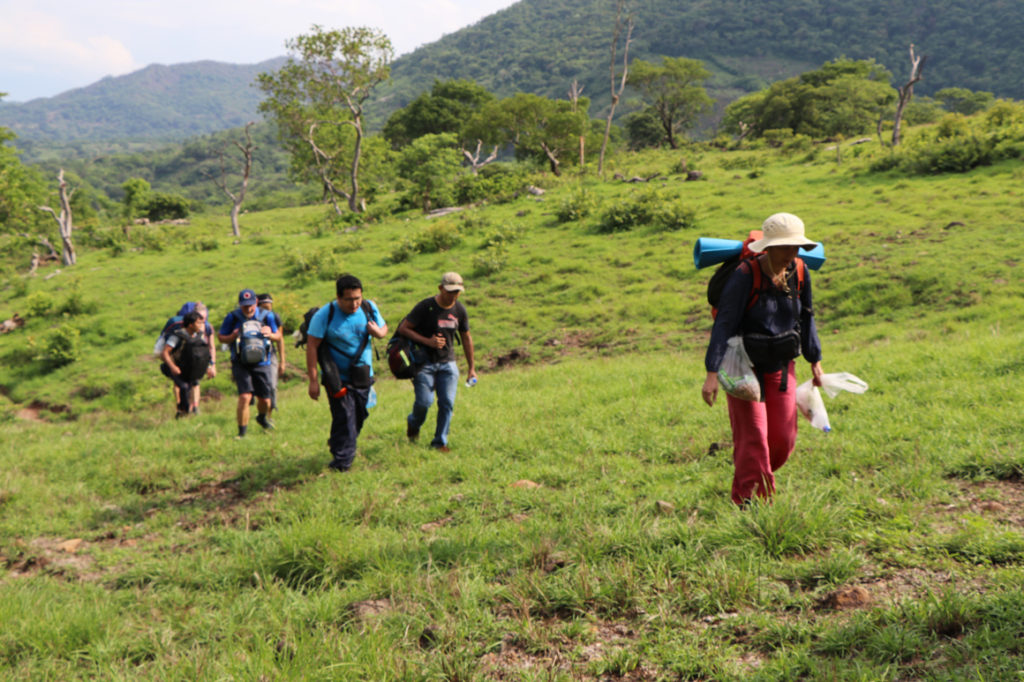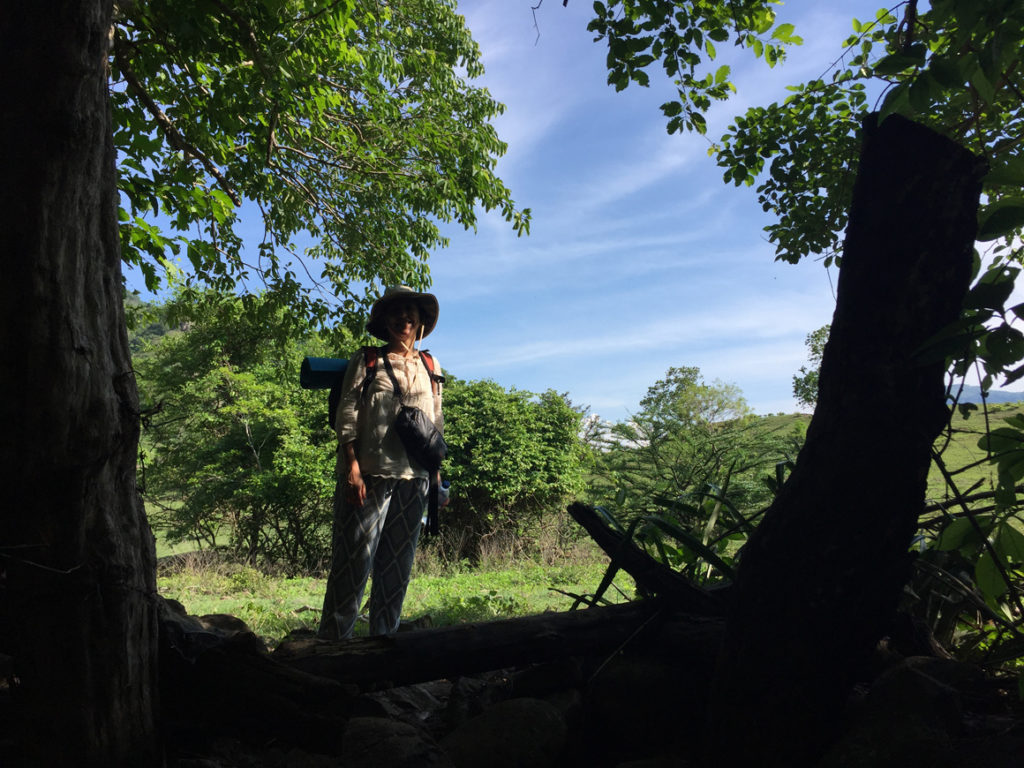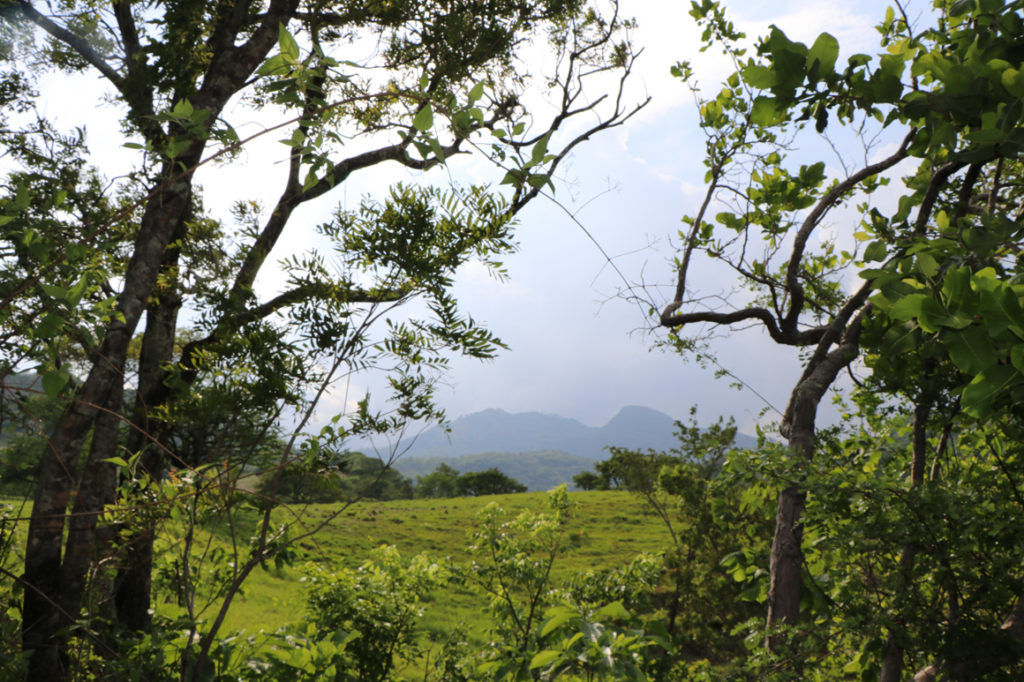After the signing of the peace agreements, the survivors began to meet to remember what happened. Every year, on May 14, the communities of Chalatenango, accompanied by people and delegations from other parts of El Salvador, as well as international visitors, set out on the way back to Las Aradas.
Part of the commemoration is to make the journey on foot, to remember the difficulties experienced by those who were fleeing in time of war.

Many groups set out from the previous day, May 13, to camp on the site. Others leave very early, in the morning of the 14th. The commemoration takes place that day, starting around 10 am, including music, a theatrical representation (reenactment of the events), testimonies, information regarding the progress of the judicial process and the memorialization of the place, and finally a mass.

In the last two years I have accompanied the community on this pilgrimage, which crosses the striking landscape of the Chalatenango fields and mountains.
One of the departure points is the community of San José Las Flores. From there the journey is made in a four-wheel drive vehicle (half an hour) to the entrance of the road, and from there walking about three hours (depending on speed, weather and number of stops). The way can also be done by other routes, organized groups leave from Arcatao, Las Vueltas and other towns.
To learn more about the road to Las Aradas:
Once in Las Aradas, people prepare to spend the night, some in tents, others outdoors. At night there are different activities, including testimonies of survivors, music and screenings.
The next day, very early, most of the participants begin to arrive. The central acts include a theatrical representation of the events, testimonies, and a Eucharistic celebration.
At the end of the events, the participants return to their communities, but not before renewing their commitment to work in solidarity, seeking justice and peace, and also to return the following year.





